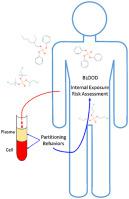当前位置:
X-MOL 学术
›
Environ. Res.
›
论文详情
Our official English website, www.x-mol.net, welcomes your
feedback! (Note: you will need to create a separate account there.)
Estimation of internal human daily intakes of organophosphate esters using one-compartment toxicokinetic model in the whole blood from Hebei Province, China.
Environmental Research ( IF 7.7 ) Pub Date : 2020-04-08 , DOI: 10.1016/j.envres.2020.109493 Xiaolei Wang 1 , Guoqiang Shan 1 , Lingyan Zhu 1
Environmental Research ( IF 7.7 ) Pub Date : 2020-04-08 , DOI: 10.1016/j.envres.2020.109493 Xiaolei Wang 1 , Guoqiang Shan 1 , Lingyan Zhu 1
Affiliation

|
To evaluate the human health risks attributed by organophosphate ester (OPE) exposure, it is very important to estimate the daily intakes (DIs) of OPEs in human. In this study, the DIs of OPEs were estimated using a simplified one-compartment toxicokinetic model based on their total clearance rates in human and their whole blood concentrations. Thirty paired human whole blood and plasma samples were collected from participants in Hengshui, Hebei Province, China. The detection frequencies of most OPEs in the whole blood were lower than 50.0%. Thus, the OPE levels in whole blood were converted from the corresponding plasma levels using the fractions of OPEs in plasma (Fp), which were estimated from an in vitro partition assay and the values were in the range of 0.52-0.98. The measured whole blood concentrations of triphenyl phosphate (TPHP) and tris(chloroethyl) phosphate (TCEP) were comparable to those converted from the plasma concentrations, suggesting that the conversion method was reliable. The estimated total DIs of TPHP, TCEP, and tris(2-chloroisopropyl) phosphate were 1-30 times of those derived by the external exposure method, which usually excluded many exposure sources. The estimated human health risks based on the DIs indicated that the carcinogenic and non-carcinogenic effects of OPEs for the participants in Hengshui, Hebei Province, China, were negligible. This study recommended a more reliable and simpler method to estimate the human health risks attributed to the exposure of OPEs.
更新日期:2020-04-08











































 京公网安备 11010802027423号
京公网安备 11010802027423号